
Exploring the unique architecture of Hoi An ancient town
This place not only attracts tourists by its winding streets and interesting local culture but also by its distinctive architecture that bears the imprint of time. Let's delve into the unique architecture of Hoi An with Hoi An Memories Land in the following article!
1. History of formation and development of Hoi An ancient town
Hoi An appeared in the latter half of the 16th century and rapidly evolved into one of the most vibrant international trading ports in Southeast Asia. It attracted numerous merchants from countries such as Japan, China, the Netherlands, etc., creating a multicultural city with distinct quarters for each community. However, by the 18th century, due to wars and the closed-door policy of the Nguyen dynasty, Hoi An gradually declined and lost its position as an international trading port. Nevertheless, Hoi An Ancient Town continued to develop with the construction of new streets and neighborhoods.
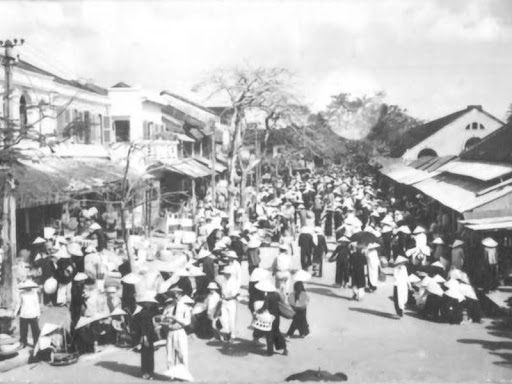
Hoi An played a significant role in the economy for the Nguyen lords in Dang Trong.
The ancient town is a place that preserves the unique architectural values, evidence of international cultural and commercial exchanges in history. As a result, in 1999, UNESCO recognized Hoi An Ancient Town as a World Cultural Heritage Site, making it a renowned tourist destination attracting tourists from all over the world.
2. What makes the architecture of Hoi An Ancient Town unique?
The architecture of Hoi An Ancient Town has many unique features, as exemplified by the following aspects:
2.1. Open space
The first distinctive feature of Hoi An Ancient Town's architecture is open space. Although the houses here are built closely together, they do not create a sense of confinement or claustrophobia. Thanks to a system of wide windows and doors, along with small front yards, these houses always receive natural light and cool breezes.
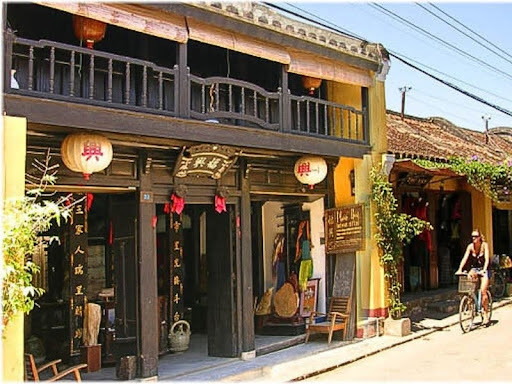
Thanks to the wide open window and door system, it does not create a feeling of being cramped or cramped
2.2. Traditional ancient house architecture
Hoi An is famous for its ancient houses built in the 17th and 18th centuries. Hoi An ancient house architecture is made mainly of wood, bricks and yin and yang tile roofs, a harmonious combination of Vietnamese, China and Japan culture create a unique beauty and attract tourists.
Hoi An ancient houses have a curved tile roof system and roof edges with many layers of tiles stacked on top of each other. This type of roof is not only highly aesthetic but also helps with good drainage and effective heat protection. Besides, the door and window system are designed to be high, wide, without bars, made of wood, with many beautiful decorative patterns to create a feeling of airiness and spaciousness for the house. The yard is another unique feature, houses often have a small front yard, often paved with bricks or planted with trees, a place for people to live, receive guests or enjoy the scenery.

Hoi An ancient houses have a yin-yang tile roof system with many layers of tiles stacked on top of each other
2.3. Street architecture
One of the distinctive features that attract tourists to Hoi An is its winding streets, concealed under the shade of lush trees. Walking along these streets, tourists seem to be lost in a different world, completely separate from the hustle and bustle of urban life.
On both sides of the streets are ancient houses adorned with moss, bearing the mark of time. The curved tiled roofs, vibrant yellow walls, delicate mother-of-pearl inlaid wooden doors or the shimmering multicolored lanterns hanging everywhere contribute to creating a picturesque, romantic and captivating scene.
Discover more: Hoi An Ancient Town and 1001 things you might not know
3. Highlighting some famous architectural landmarks in Hoi An
Here are some renowned architectural landmarks in Hoi An that you cannot miss when visiting:
3.1. Cau pagoda
The Cau pagoda stands as a typical symbol of this peaceful land. Located across a small branch of the Thu Bon River, the Cau Pagoda resembles a soft silk ribbon connecting the two banks of the ancient town, bringing a unique and impressive beauty for tourists. This pagoda is also the pride of Hoi An residents, as it is featured on the 20,000 VND polymer banknote.
Cau Pagoda was constructed in the 17th century by Japanese merchants. It’s also known as the Japanese Bridge or Lai Vien Kieu. Cau Pagoda’s architecture is a harmonious combination of Vietnamese, Chinese and Japanese cultures with a curved roof, resembling the shape of a boat, adorned with intricate floral patterns at both ends.
In addition, there are the profound spiritual presence of four sacred animals. Two imposing stone dogs located at the Eastern end of the bridge symbolize loyalty and strength, always ready to protect the ancient town. Opposite them, at the Western end, are stone monkeys representing intelligence, agility, and luck. Despite numerous renovations, this structure still retains its ancient charm.
Address: 186 Tran Phu Street, Minh An Ward, Hoi An City
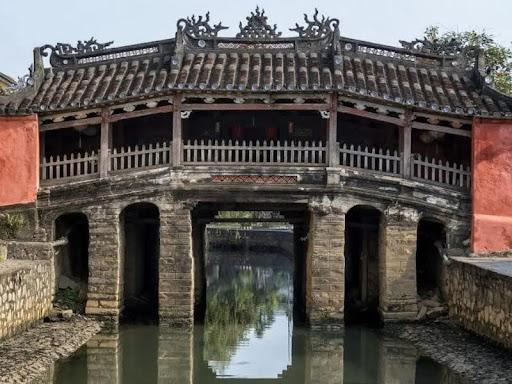
The Cau Pagoda - Hoi An's symbol featured on the 20,000 VND banknote.
3.2. Tran Clan's Church
Built over 200 years ago by Mr. Tran Tu Nhac, Tran Clan's Church serves as a gathering place for descendants to worship their ancestors. Situated on a 1,500m2 area, the church exudes nostalgia with its curved yin-yang tiled roof, intricately carved rafters and columns, and moss-covered walls tinted by time.
The main altar is solemnly decorated with a high roof, creating a sense of spaciousness and openness. The ancestral altar is placed in the center, demonstrating reverence for those who have contributed to the Tran family lineage. The auxiliary part of the temple serves as the resting place for the patriarchs and descendants. Behind the temple lies a spacious courtyard with ancient loquat trees, where the umbilical cords of many generations in the family are buried.
- Address: 21 Le Loi Street, Minh An Ward, Hoi An City
3.3. 3 Chinese Assembly Halls have unique beauty
The Assembly Hall is not only a tourist attraction, but also a place to preserve the cultural and historical values of the Chinese community in Hoi An. The most prominent among them are the Fujian Assembly Hall, the Chaozhou Assembly Hall and the Chinese Assembly Hall. The architecture of these assembly halls has a Chinese style with curved domes, yin and yang tiles and exquisitely sculpted decorative details. Tourists here not only can admire the impressive architecture but also have the opportunity to learn about the culture, beliefs and life of the Chinese community.
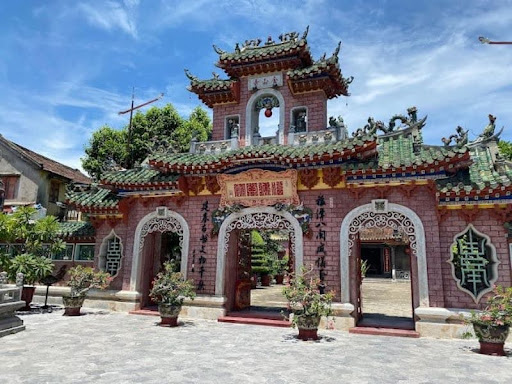
The Chinese Assembly Hall in Hoi An has unique architecture and exquisite sculptures
See more: 40+ places to visit in Hoi An that captivates travelers
4. Exploring Memories Land in Hoi An - A place to preserve golden memories
Located next to Hoi An ancient town, Hoi An Memories Land is like a radiant gem, a unique destination for tourists who love to explore culture and experience a luxury resort. This place is a pioneer in the cultural tourism trend in Vietnam, creating green spaces in harmony with nature, aiming for a sustainable tourism ecosystem.
Impression Park Hoi An with its themed streets and various mini shows waiting for tourists to explore.
Hoi An Impression Park vividly recreates bustling Hoi An through diverse architecture and distinctive art, taking tourists on a nostalgic time travel to the past. Based on the architecture and cultural - historical stories of Hoi An, this park recreates the image of the leading trading port of Faifo in Southeast Asia in the peak years of the 16th-17th centuries. Tourists visiting this place can not only experience unique cultural spaces in each area such as Vietnamese Village, Japanese Village, Chinese Village or Thien Duc Spiritual Area, but also enjoy lively interactive mini-shows, helping them gain deeper insights into the life, people and culture of Hoi An during its golden age.
Xem thêm: Hoi An getaway: Luxury at your fingertips for 1,300,000 VND
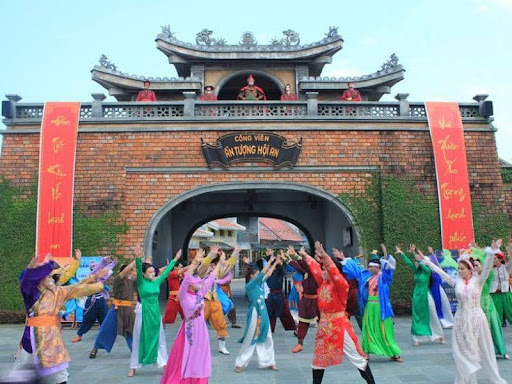
Hoi An Memories Resort & Spa - A classy resort experience
A special feature of the resort is its exterior architecture inspired by traditional houses in Hoi An. With light yellow walls and stacked tiled roofs, it creates a special picture of the ancient town. However, stepping inside reveals a modernized interior design with all the necessary amenities, bringing guests a comfortable and convenient stay.
In particular, Hoi An Memories Resort & Spa also focuses on using traditional materials such as wood, bamboo, and cork in construction and decoration. This not only helps preserve the local cultural beauty but also gives guests a feeling of closeness to nature.
Because the resort is located on Hen Islet in the middle of the romantic Thu Bon River, all rooms at the resort have views overlooking the river, creating an extremely relaxing feeling. Besides, the resort also owns lush green gardens, clear blue swimming pools and romantic cobblestone pathways. All blend together to create a peaceful and relaxing space, allowing guests to fully appreciate the beauty of Hoi An.

The Hoi An Memories show recreates 400 years of ups and downs of Hoi An
Hoi An Memories Show is like a vivid artistic painting, drawing a story about the history, culture and people here. This spectacular real scene performance show leads audiences through the flow of time, from early days to present, discovering the unique cultural values of Hoi An through 5 acts:
- Life: The show opens with the Life act, taking audiences back to the early days of reclamation to establish the hamlet of Hoi An. The image of an ancient city, a community of people being formed day by day with daily activities such as building houses, catching fish and more. Besides that is the scene of a happy family welcoming the birth of a newborn with promises for a bright future.
- Wedding: Following the show is the splendid Wedding act, recreating the historic wedding ceremony of Princess Huyen Tran and King Che Man. This event marks a turning point in the relationship between the two nations of Dai Viet and Champa, while also recounting the noble sacrifices for national peace made by Princess Huyen Tran at that time.
- Lamps and Sea: The Lights and Sea act brings a touching story of a girl and a boy in Hoi An who set sail to conquer the ocean. Despite facing numerous hardships and challenges, they always direct their love towards each other with faith and hope. The flickering light on the shore is a symbol of the love and loyalty of Hoi An women.
- Integration: Transitioning into a phase of multicultural cultural convergence, the Integration act recreates the vibrant atmosphere of the Hoi An's commercial port at one time. The thread of time shines on the loom of memories, opening up a beautiful space with cultural values from many countries.
- Ao Dai: Closing the show is the Ao Dai act, honoring the graceful beauty of Vietnamese women in traditional attire. The elegant and delicate beauty of the ao dai blends with the scenery of Hoi An ancient town, creating a poetic and impressive picture.
Discover more: Hoi An real scene performance: A must-see experience

Spectacular stage with beautiful modern lighting system
Conclusion
Despite the fluctuations in history, Hoi An ancient town still retains its special architectural and cultural values. This has made this place a popular destination loved and chosen by tourists from all over the world. Coming to Hoi An, don't forget to visit the places with great architecture in this article.
If you would like to book a room at Hoi An Memories Resort & Spa and enjoy the attractions at the Hoi An Impression Park, please contact Hoi An Memories Land now to experience an exciting day of relaxation!
>> See more: Essential Tips for Travel to Hoi An
-
Hotline: 1900 63 66 00
-
Press 1 For tickets
-
Press 2 For Customer Service
Latest news
![Over 30 Unique Things To Do In Hoi An Viet Nam [Monthly Update]](public/media/thumb/dao-ky-uc-hoi-an-la-mot-quan-the-du-lich-nghi-duong-van-hoa-nam-ngay-canh-pho-co1-90x90.jpg)
Over 30 Unique Things To Do In Hoi An Viet Nam [Monthly Update]

Where to Stay in Hoi An? Essential Tips for Choosing the Ideal Accommodation for First-Timers

Discover the Chinese Assembly Halls in Hoi An: Cultural Icons of the Ancient Town

Hoi An Specialties by Season: What to Eat Throughout the Year











![Over 30 Unique Things To Do In Hoi An Viet Nam [Monthly Update]](public/media/thumb/dao-ky-uc-hoi-an-la-mot-quan-the-du-lich-nghi-duong-van-hoa-nam-ngay-canh-pho-co1-358x223.jpg)


Comment